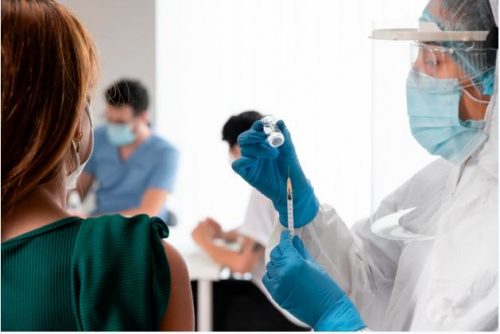
With worldwide vaccination rates increasing and coronavirus-related deaths dropping, most people are convinced the worst is in the rearview mirror. Yet while it’s unlikely we’ll need to go through total lockdown again, the pandemic is far from over.
The stalemate between humanity and COVID-19 is demonstrated by the continued effort of businesses to implement and enforce an elevated health and safety standard. Given the reluctance of most companies to spend money unless absolutely necessary, these upgrades signal a belief that such measures will continue to be required for the foreseeable future.
For companies manufacturing and selling personal protective equipment and physical distancing materials, the writing on the wall spells one word: profit. For example, Ins’TenT Industries, a company specializing in custom canopies, tents, and signage, continues to put up record sales numbers as they work tirelessly to keep up with demand. The same is true for 3M, makers of the N95, Procter & Gamble, makers of Clorox, and similarly positioned corporations around the globe.
However, many public health officials caution against overreliance on outward-facing protective measures. Not only does the CDC refer to some of these efforts as hygiene theater, but they also caution against barriers and signs acting as replacements for the most effective protection of all: full vaccination.
The need for more people to get vaccinated took on greater significance with the spread of a more contagious strain of coronavirus. Dubbed the Delta variant, those infected by it are far more likely to require hospitalization if they’ve yet to get fully vaccinated.
In countries where access to the vaccine is elusive, if not non-existent, physical measures to prevent the spread of new variants are the best option available. However, in countries like the United States, where vaccines are now available to everyone 16 or older, barriers and warnings should no longer serve as the first line of defense.
With that said, mask mandates and physical distancing remain critical components of the fight against COVID-19. The need for adequate barriers, markers, and signage is especially crucial in elementary schools, where the student body is not yet old enough to get the vaccine. In fact, the American Academy of Pediatrics recently released a recommendation that all persons inside schools should continue to wear masks for the 2021-2022 school year, including those who’ve been fully vaccinated.
Industries where physical distancing materials are still needed include food service, retail, healthcare, tourism, and professional sports. For example, planners of the Tokyo Olympics have taken extraordinary measures to prevent the spread of the virus, none of which are reliant on vaccination. Such efforts are due to the inconsistent availability of the virus among participating nations.
Assuming a certain percentage of the population never gets the vaccine, new variants will continue to pop up. That’s because the unvaccinated part of the population will act as a reservoir, with individuals acting as incubators. At this rate, arriving at herd immunity will take years. All the more reason why businesses see a benefit to investing in PPE and PDM.
As time marches on, companies and individuals will need to be on the lookout for the previously mentioned hygiene theater. At some point, the need for significant health and safety measures will wane, but manufacturers and sellers of PPE and PDM will continue to market themselves as essential. Consumers will have to think for themselves, and the same goes for business owners and management.
In the meantime, entities around the world continue to look towards all options when it comes to slowing the spread of COVID-19. Reinstated mask mandates, reinforced protective measures, and even vaccination requirements for employees are all on the table for 2021 and beyond.
Interesting Related Article: “The Business of Health: An Overview Guide to Employee Health Coverage“

